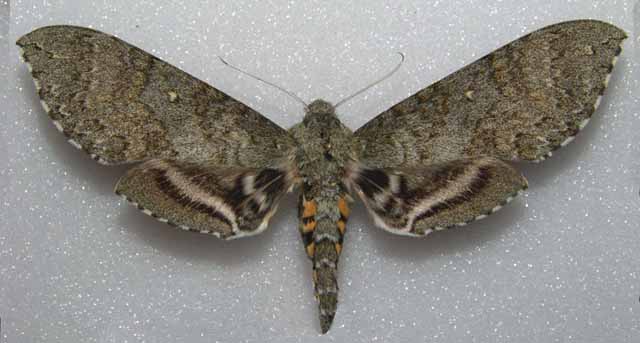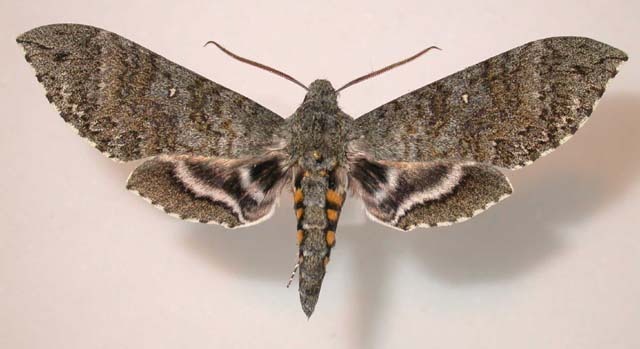Manduca mossi
Manduca mossi
man-DOO-kuhmmMOSS-eye
(Jordan, 1911) Protoparce

Manduca mossi male, Peru, courtesy of
Hubert Mayer
copyright.
This site has been created by
Bill Oehlke at oehlkew@islandtelecom.com
Comments, suggestions and/or additional information are welcomed by Bill.
TAXONOMY:
Family: Sphingidae, Latreille, 1802
Subfamily: Sphinginae, Latreille, [1802]
Tribe: Sphingini, Latreille, 1802
Genus: Manduca Hubner, 1807 ...........
Species: mossi (Jordan, 1911)
|
MIDI MUSIC
.....It's a Wonderful World.....
copyright C. Odenkirk
ON.OFF
<bgsound src="world.mid" LOOP=FOREVER>
|
DISTRIBUTION:
Manduca mossi
flies in
Peru (specimen type locality): Lima (7000 feet);
eastern Ecuador (IK); and
Bolivia: Beni: José Ballivián, Espíritu.
Greyish lines are somewhat diffuse, not in sharp contrast with grainy grey (basal, median, terminal areas) and grey-brown (inner lining of aml and postmedian areas).
The cell spot is a small, thick v-shape with the apex toward the head. The apical area is concolorous with the terminal area. The inner pm line is concave from the costa for about
40% of its length, then angles almost 90 degrees to form another concave arc for the remaining 60% of its course to the inner margin.

Manduca mossi,
courtesy of Jean Haxaire
FLIGHT TIMES:
Manduca mossi adults fly in
January and possibly in other months.
ECLOSION:
Pupae probably wiggle to surface from subterranean chambers just prior to eclosion.
SCENTING AND MATING:
Females call in the males with a pheromone released from a gland at the tip of the
abdomen. Adults take nectar from flowers.
EGGS, LARVAE, PUPAE:
Larva have been reported on
.
Use your browser "Back" button to return to the previous page.
Return to Sphingidae Index
Return to Sphingini Tribe

